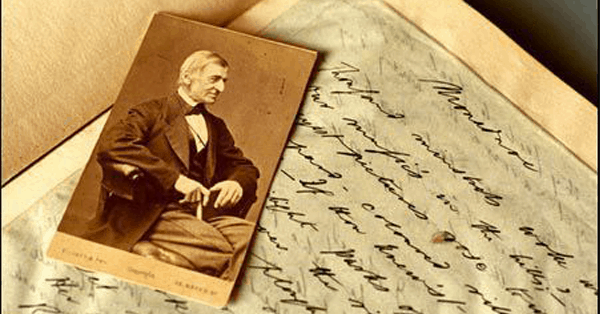
What was wrong with Ralph Waldo Emerson’s Christology? In this episode of 5 Minutes in Church History, Dr. Stephen Nichols explores the legacy of Emerson.
On July 15, 1838, Ralph Waldo Emerson gave the commencement address at Harvard Divinity School. The address has come to be seen as a significant essay, both in American literature and American history, and is simply known as the “Divinity School Address.” Emerson begins by setting the stage:
“In the moment of this refulgent summer, it has been a luxury to draw the breath of life. The grass grows; the buds burst; the meadow is spotted with fire and gold and the tint of flowers; the air is full of birds and sweet with the breath of the pine.”

In the “Divinity School Address,” Emerson sets about dismantling every single doctrine of orthodox Christianity. He primarily sets his sights on two doctrines: the doctrine of Christ and the doctrine of Scripture. About Christ, he says:
“Jesus Christ belonged to the true race of prophets. He saw with open eye the mystery of the soul, drawn by its severe harmony, ravished with its beauty, he lived in it and had his being there. Alone, in all history, Christ estimated the greatness of man. One man was true to what is in you and in me. He saw that God incarnates himself in man and evermore goes forth anew to take possession of his world.”
Do you see what Emerson is saying there? He affirms that Jesus is divine, that Jesus is God incarnate. But then again, so are we all. In fact, he goes on to say that these doctrines of the deity of Christ are a distortion and that the memory of Christ suffers in these distortions.
He has this to say about Scripture:
“I look for the hour when the supreme beauty which ravished the souls of those eastern men, and chiefly of those Hebrews, and through their lips spoke oracles to all time shall speak in the west also. The Hebrew and Greek scriptures contain immortal sentences that have been bread of life to millions. But, they have no epochal integrity. They are fragmentary and are not shown in their order to the intellect. I look for the new teacher that shall follow so far those shining laws that he shall see them come full circle.”
Emerson was looking for a new teacher because the Bible simply is not worthy.
This address came at a very crucial time. Unitarianism had largely taken over the formerly Puritan Boston and the formerly Puritan Harvard. In fact, a century earlier, Jonathan Edwards was complaining of Harvard slipping. But by the 1830s, Harvard was in the grip of Unitarian thought. Emerson wanted nothing to do with Unitarianism. At one point, he called it “a corpse-cold religion, the rationalism of it.” Emerson was swept away with the ideals of English Romanticism and he brought that in the guise of Transcendentalism to an American context. But make no doubt about it: the “Divinity School Address” was a line in the sand. Unfortunately, the line was in the entirely wrong place.
Stay connected with 5 Minutes in Church History by getting the weekly podcast on iTunes, SoundCloud, or via RSS. You can also subscribe to the blog via RSS and follow us on Twitter and Facebook.
(This podcast is by Ligonier Ministries. Discovered by e2 media network and our community — copyright is owned by the publisher, not e2 media network, and audio is streamed directly from their servers.)